How To Check How Many Downloads An App Has
On Windows 10, when your computer suddenly becomes really slow and apps are unresponsive, the reason could be that the system already exhausted all the available Random Access Memory (RAM). However, it does not immediately mean that a memory upgrade is needed since the problem might be a misbehaving application.
If you suspect a problem with how apps are using the available memory, Windows 10 includes at least two ways to check the memory usage using Task Manager and the Resource Monitor tool, which you can also use to terminate apps and restore the device to a working condition.
In this Windows 10 guide, we will walk you through the steps to find out the memory usage for an app running on your computer and what to do when a particular app is hogging the resources.
Shop Cyber Monday deals at: Amazon | Walmart | Best Buy | Microsoft | Dell
How to check app memory usage on Windows 10
To determine which apps are using the most memory, use these steps:
- Open Start.
-
Search for Task Manager and click the top result to open the app.
Quick tip: You can also right-click the taskbar and select the Task Manager option, or right-click the Start button and select the Task Manager option. Or you can also use the Ctrl + Shift + Esc keyboard shortcut – just to name a few options.
-
Click the More details option (if in compact mode).
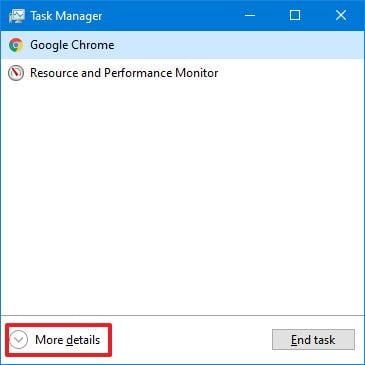 Source: Windows Central
Source: Windows Central - Click the Processes tab.
-
Click the Memory header to sort the applications by memory usage.
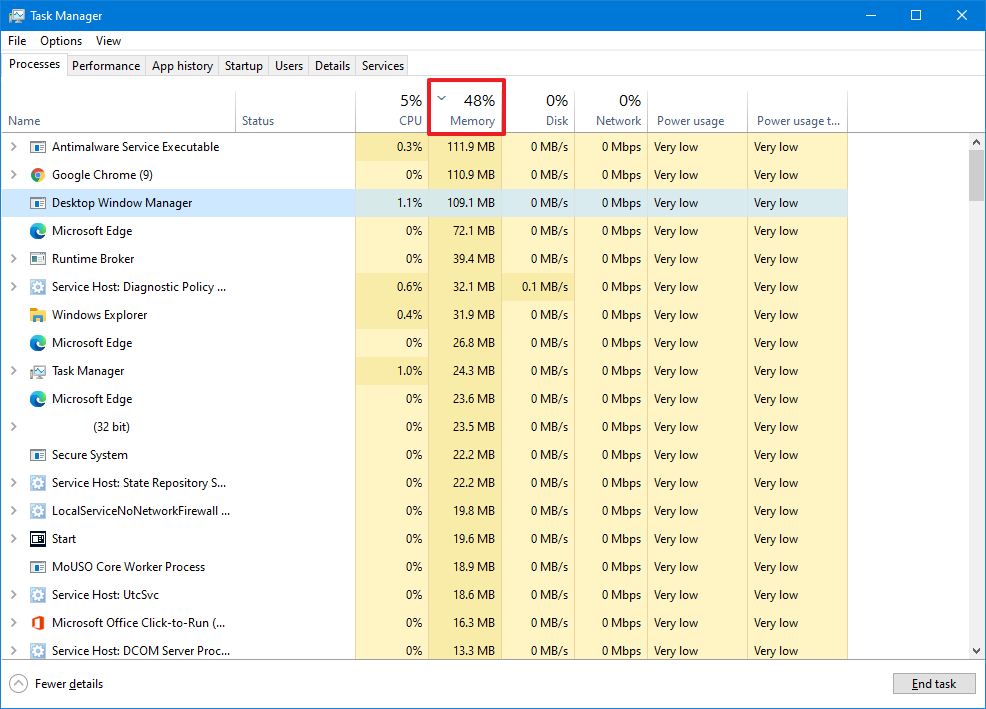 Source: Windows Central
Source: Windows Central -
Confirm the apps using the most memory.
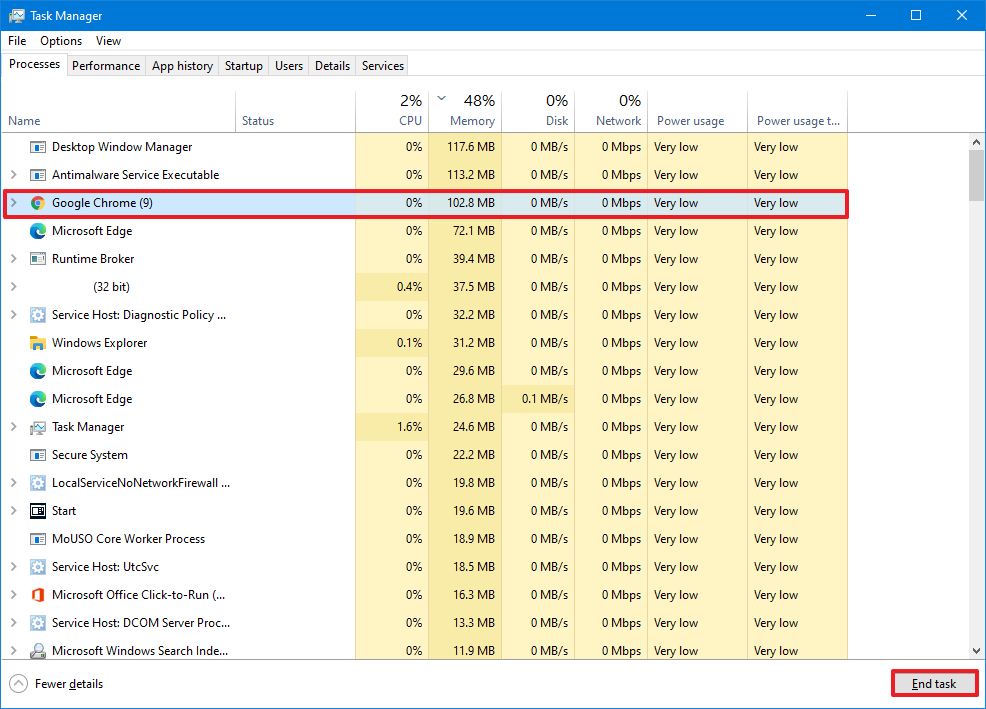 Source: Windows Central
Source: Windows Central -
(Optional) Select the app consuming a large amount of memory.
Quick note: It is only best to terminate an app in the event that it is not responding or consuming an unusual amount of memory since shutting it down you may lose unsaved work.
- Click the End task button.
Once you complete the steps, the program will be terminated, freeing up more memory for other applications.
How to check app memory usage with Resource Monitor
To check the amount of RAM that apps are using, follow these steps:
- Open Start.
- Search for Resource Monitor and click the top result to open the app.
- Click the Memory tab.
-
Click the Private (KB) header to sort the applications by memory usage. (The information is presented in kilobytes.)
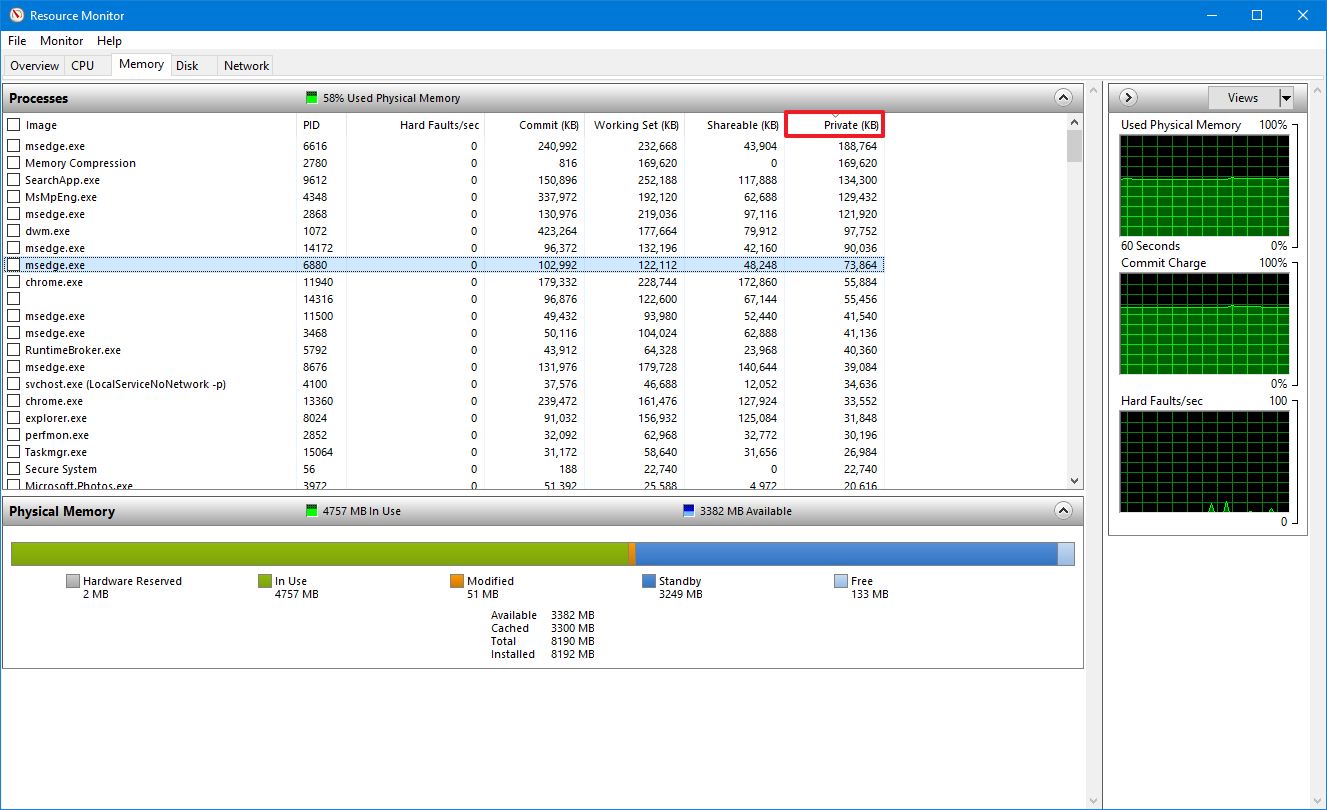 Source: Windows Central
Source: Windows Central -
Confirm the apps using the most memory.
 Source: Windows Central
Source: Windows Central Quick note: Unlike Task Manager, the Rources Monitor only provides the processes name, not the friendly name of the app — for example, "msedge.exe" instead of "Microsoft Edge," and "MsMpEng.exe" instead of "Windows Defender Antivirus." As a result, if you cannot determine the name of the app, right-click the item, and select the Search Online option. Also, using this tool, you can only terminate one process or tree at a time, which means that to terminate the application, you may need to end all the related process (usually they all have the same name).
-
(Optional) Right-click the app consuming a large amount of memory and select the End process option to terminate the process.
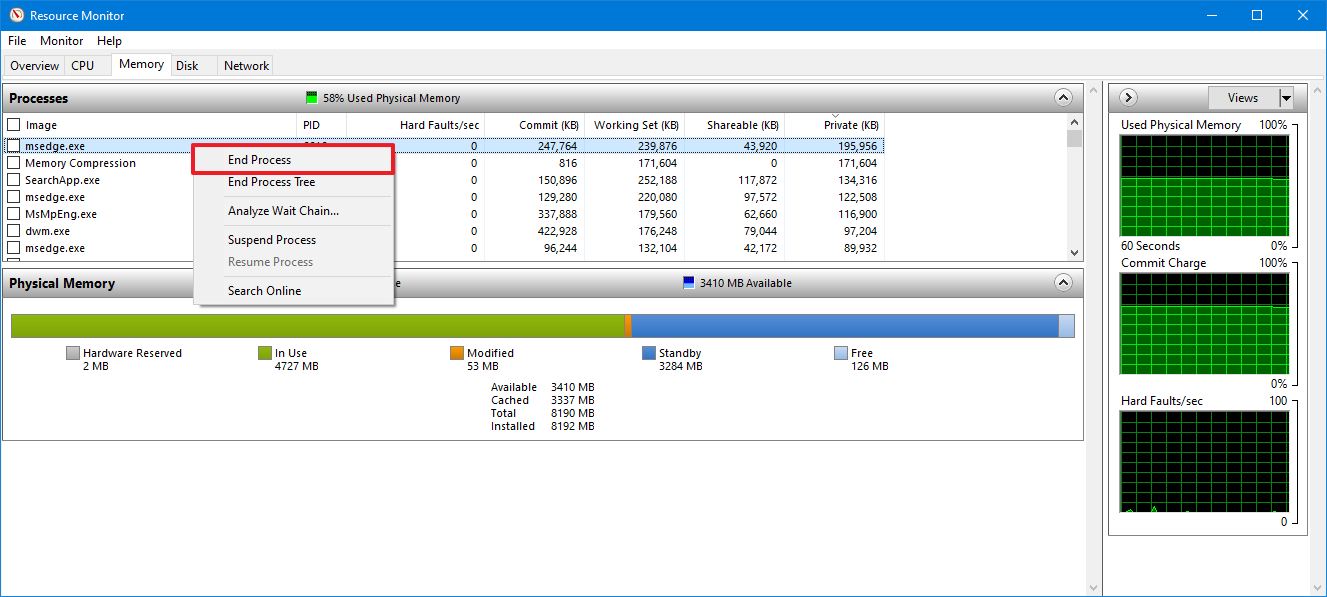 Source: Windows Central
Source: Windows Central
After you complete the steps, you will know the apps consuming the most memory on the device.
If you have problems ending a task or there too many processes consuming most of the memory, consider restarting the computer as the process will reset all the applications, potentially fixing the resources issue.
While it is always recommended to understand which apps are using the most system memory because an app uses many resources, it does not necessarily mean that it's not behaving correctly. Some software like photo and video editing and games usually require a large amount of system RAM to operate.
In the case your device suddenly becomes slow, then an app may be a problem. However, if you recently installed an application that requires a significant amount of resources or the total memory usage is hitting around 70% all the time, you may want to consider upgrading the system memory or getting a new computer that can handle the load.
More Windows 10 resources
For more helpful articles, coverage, and answers to common questions about Windows 10, visit the following resources:
- Windows 10 on Windows Central – All you need to know
- Windows 10 help, tips, and tricks
- Windows 10 forums on Windows Central-
We may earn a commission for purchases using our links. Learn more.
How To Check How Many Downloads An App Has
Source: https://www.windowscentral.com/how-determine-apps-memory-usage-windows-10
Posted by: reddickuniscomen.blogspot.com







0 Response to "How To Check How Many Downloads An App Has"
Post a Comment